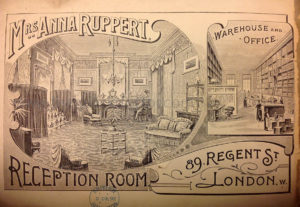 Although Henry Thompson claimed to manufacture the salts by evaporating spa water, The Monthly Gazette of Health for 1 Sept 1819 claimed that the product was nothing more than Glauber’s salt (sodium sulphate decahydrate). The Gazette had “been informed, by a gentleman residing in Cheltenham, who could prove the fact, that many tons of common Glauber’s salts, made at Lymington, were forwarded to Cheltenham. This fact may account for the water of certain wells not being weakened by the evaporation of nearly two thousand gallons daily!!”
Although Henry Thompson claimed to manufacture the salts by evaporating spa water, The Monthly Gazette of Health for 1 Sept 1819 claimed that the product was nothing more than Glauber’s salt (sodium sulphate decahydrate). The Gazette had “been informed, by a gentleman residing in Cheltenham, who could prove the fact, that many tons of common Glauber’s salts, made at Lymington, were forwarded to Cheltenham. This fact may account for the water of certain wells not being weakened by the evaporation of nearly two thousand gallons daily!!”
In spite of cynicism from some quarters, however, Thompson was highly respected as the proprietor of the Montpellier Spa, which he established in the early years of the 19th century. The spa boasted several varieties of mineral water, a pump room, baths, and 50 acres of pleasure gardens carefully laid out with rides and drives. It became Cheltenham’s most celebrated spa and was further developed after Thompson’s death by his son, Pearson. Although the fashion for spas declined in the 1830s, and late 19th-century attempts to revive the Montpellier establishment failed, many of the fine buildings are still standing today.
Image: Effects of the Cheltenham Waters, or, ‘Tis necessary to quicken your motions after the second glass. Published by S W Fores, 1823. Courtesy of the US National Library of Medicine.
T H E late H E N R Y T H O M P S O N ‘ S R E A L
C H E L T E N H A M S A L T S, made by the simple Pro-
cess of Evaporating the Montpellier Spa Waters, at the Labo-
ratory, at Cheltenham. Also, REAL EFFERVESCING
CHELTENHAM SALTS, and the concentrated Waters
and native Waters, from the Springs.
CAUTION.—The many Chemical and most injurious Fa-
brications assuming the Name of Cheltenham Salts, induce
the Proprietors to Caution the Public to ask for the late
“HENRY THOMPSON’S R E A L C H E L T E N H A M
SALTS.” None are genuine that have not the Initials R.
W. and C. J., and the late Henry Thompson’s Name, on the
Stamp.
To be had at No. 7, Throgmorton Street; of the principal
Wholesale Dealers in London, and Retail of all the Medicine
Venders throughout the United Kingdom.
Source: The Newcastle Courant, Saturday 6 September 1834


